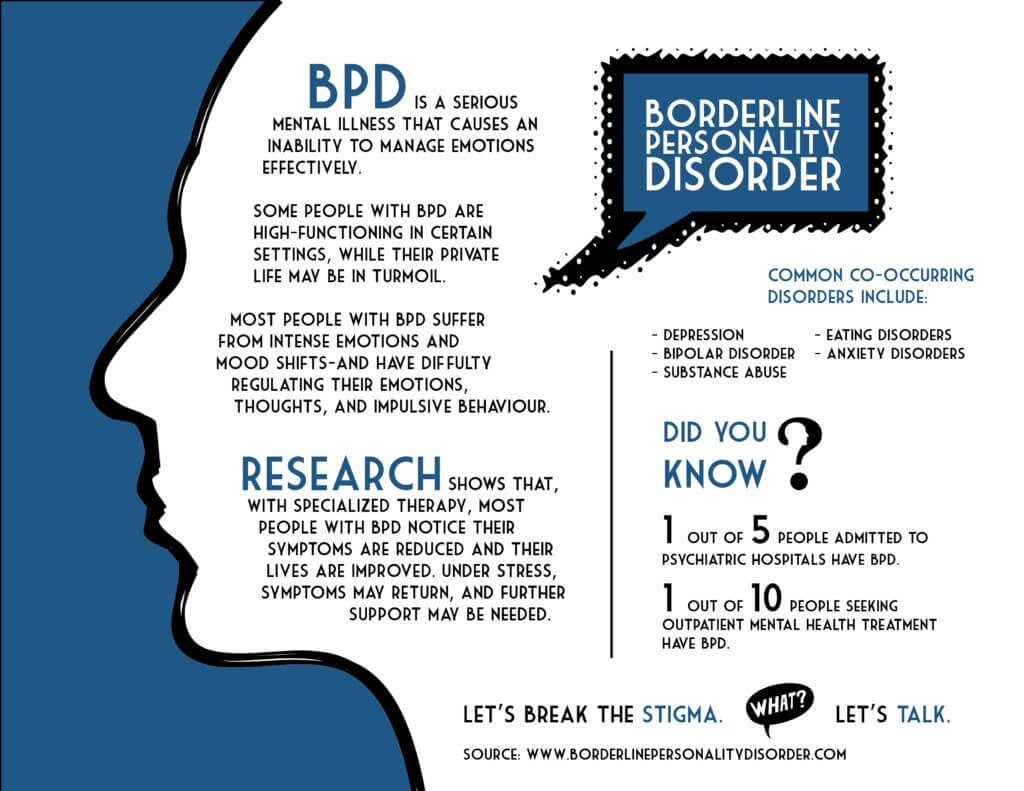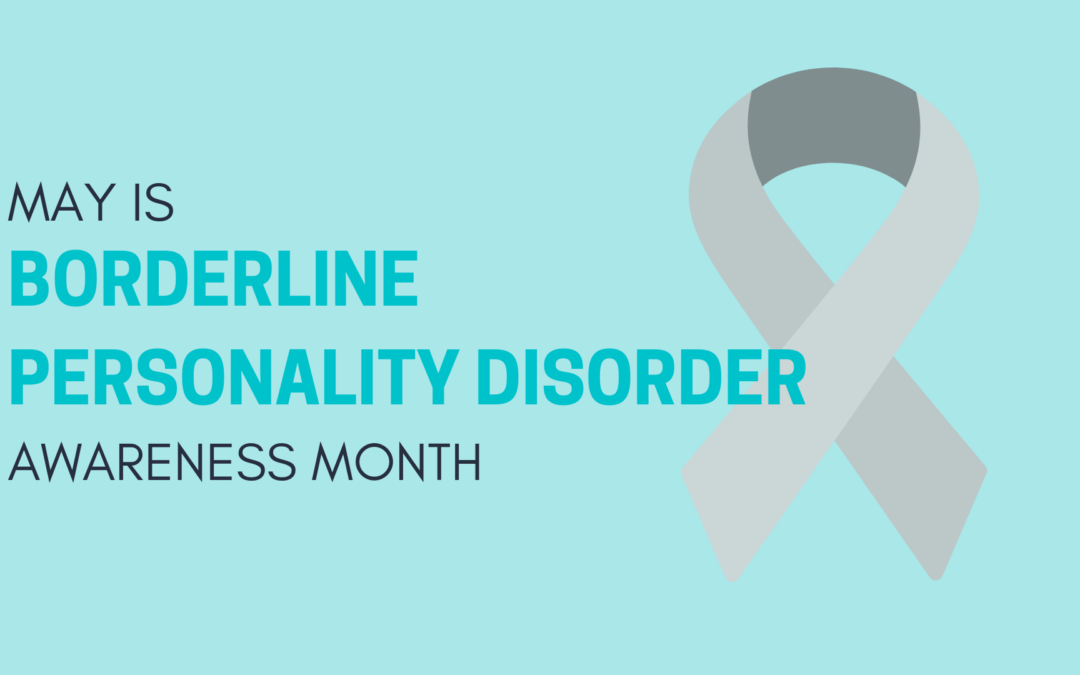In May of 2007, the National Education Alliance for Borderline Personality Disorder (NEABPD) organized hearings before congress to educate legislators about Borderline Personality Disorder (BPD). A year later, in April, 2008 the U.S. House of Representatives declared May as Borderline Personality Disorder Awareness Month.
BPD is one of the most misunderstood diagnoses in mental health. It also comes with serious stigma and negative baggage, which shows up not only in the general population, but also among mental health professionals. In the words of Joyce Burland, Ph.D. of the National Association on Mental Illness (NAMI):
“When I started my clinical career, I was warned to “stay away from ‘Borderlines’.” [So] I began to search out information about this dread diagnosis, which was primarily attached to women, and carried with it such a blatantly stigmatizing reputation. As I began working with people with this disorder, I became aware of the enormous strength and resiliency they brought to the daily struggle of coping with the disruptive symptoms of the condition, and of the patience and loyalty shown by the families who loved and supported them.”

Burland offers several possible explanations for the negativity surrounding BPD. First, the wide range of symptoms – all of which are rarely present in one individual – and their overlap with other mental health disorders make it difficult to diagnose. Second, it rarely occurs alone, and is often accompanied by a co-occurring condition such as major depressive disorder, bipolar disorder, substance use disorders, eating disorders, and anxiety disorders. Finally, because of the presence of other mental health disorders, people with BPD are often on several medications – and there is no single medication that has been researched and approved for BPD.
This is unfortunate because BPD is far more common than most people realize. Here’s a set of facts people should know:
Five Quick Borderline Personality Disorder (BPD) Facts
- Over 14 million Americans suffer from BPD.
- More people have BPD than schizophrenia and bipolar disorder combined.
- People with BPD commit suicide at 400 times the rate of the general population.
- BPD is more common in women than men.
- BPD is the 3rd leading cause of death for young adult women between 15-24.
Those facts are surprising: 5.9% of the adult population has BPD, they commit suicide at an alarming rate, and women are especially vulnerable to the disorder.
That’s why we have Borderline Personality Disorder Awareness Month. To raise awareness and awareness, end the stigma around the condition, and encourage people to get the help they need. Each year, the National Education Alliance for Borderline Personality Disorder (NEABPD) publishes a blog called “A Post a Day in May” to help people learn more about BPD. Last year’s blog included posts on skills derived from dialectical behavior therapy (DBT), including mindfulness, coping, naming emotions, and distress tolerance strategies.
Now, to ensure we’re all on the same page, we need to define what we mean when we say BPD.
What Exactly is Borderline Personality Disorder?
According to the National Institute of Mental Health (NIMH) BPD is:
“A mental illness marked by a pattern of varying moods, self-image, and behavior. These symptoms often result in impulsive actions and problems in relationships. People with BPD may experience intense episodes of anger, depression, and anxiety that can last from a few hours to days.”
There are nine symptoms commonly associated with BPD:
- Frantic efforts to avoid abandonment, real or imagined
- Patterns of intense and unstable relationships with friends and family, which may manifest as shifting from one extreme relationship state to another, such as:
- Idealization, i.e. extreme love and intimacy
- Devaluation, i.e. extreme dislike or anger
- Impulsive, risky behaviors that may include:
- Substance Abuse
- Reckless driving
- Binge eating
- Spending sprees
- Gambling
- Distorted and unstable self-image, which can affect moods, values, opinions, goals, and relationships.
- Suicidal and self-harming behavior
- Intense mood swings. Mood episodes may last from a few hours to several days
- Chronic feelings of emptiness
- Intense, inappropriate anger that’s difficult to control
- Dissociative feelings such as:
- A sensation of being cut off from one’s body
- A sensation of seeing oneself from outside one’s body
- Stress-related paranoia, which can lead to psychotic episodes
It’s rare to see all the symptoms above in one person. Diagnosis can be tricky because many of the symptoms above overlap with other mental health disorders. In general, if five of the nine symptoms are present, a therapist may diagnose an individual with BPD.
The best way to diagnose BPD is through a comprehensive evaluation by a mental health professional, which includes a thorough assessment of personal and family mental and physical health.

What Causes Borderline Personality Disorder?
Health scientists and researchers have not identified a clear cause of BPD. However, the latest research indicates the following elements may play a role in the development of the disorder:
- Genetics. People with a close relative – a parent or sibling – may be at increased risk of BPD.
- Neurobiological factors. Research shows people diagnosed with BPD sometimes have structural and functional changes in the areas of the brain that regulate emotions and control impulses. Scientists have not identified whether these structural and functional changes are the cause of the disorder, or a result of the disorder.
- Environmental factors. People with BPD often report a history of trauma, such as physical, emotional, or sexual abuse, adverse childhood experiences, or exposure to violence and/or hostile conflicts.
It’s important to understand that not all people who meet the criteria above will develop BPD. Also, people who don’t meet any of the above criteria may develop BPD – that’s one of the reasons it’s a misunderstood disorder. Some experts indicate we’re about twenty years behind on research regarding BPD, as compared to other mental health disorders such as depression, bipolar, and anxiety. Despite this fact, there are effective treatments for BPD.
How to Treat Borderline Personality Disorder
To date, mental health professionals recognize that the best approach to BPD is a comprehensive, integrated treatment plan. It should include psychotherapy, peer support, family support, and in some cases, medication.
- Psychotherapeutic Approaches: Talk therapy is the first-line treatment for BPD. Evidence indicates that Dialectical Behavior Therapy (DBT), Cognitive Behavioral Therapy (CBT), and Mentalization-Based Therapy (MBT) are effective in treating BPD.
- Medication: There are no known medications specifically designed to treat people with BPD. However, people that have BPD and a co-occurring disorder such as extreme anger, anxiety, or depression may be prescribed mood stabilizers, antipsychotics, antidepressants, or anti-anxiety medications.
- Peer and Family Support: People with BPD suffer from intense feelings of loneliness and intense fears of abandonment. They also experience drastic mood swings and tend to have volatile relationships. For these reasons, having friends and family who understand the condition and are compassionate, patient, and accepting can be crucial.
Twenty years ago, many mental health professionals thought there was little hope that people with BPD could manage their symptoms. Current research, however, shows that treatment can decrease symptoms and improve the quality of life for people with BPD.
Talk therapy first, medication if needed, and social support next: that’s the current treatment model. The family/social aspect of treatment should not be downplayed. Friends and family cannot make the emotions go away, but they can offer steady support when the individual diagnosed with BPD is on a rollercoaster of extremely difficult to manage thoughts and emotions.
Finding Treatment for BPD
When seeking professional help for BPD, it’s critical to find a therapist with experience treating BPD. Also – and this should go without saying – any therapist you consider should be fully licensed and accredited. Licensure and accreditation for qualified therapists should be easy to find: if it’s not on their website or their bio, move on to another therapist. The last criterion for finding the right therapist is totally subjective: people seeking therapy should always trust their instincts. If the connection feels right, then trust that. If it doesn’t, then you should keep searching until you find someone you feel comfortable with.
These online resources can you find an effective treatment for BPD:
NAMI’s article “How You Can Get The Right Mental Health Treatment”
This BPD Fact Sheet published by the National Education Alliance for Borderline Personality Disorder (NEABPD) contains a wealth of BPD facts, resources, and helpful information for people struggling with BPD or people with friends or loved ones struggling with BPD.

